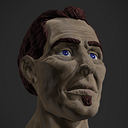Member-only story
Working with Screen Space Reflections in Unity’s HDRP
What makes Screen Space Reflections unique? For starters, they are accurate reflections. If you have ever worked with reflection probes, you know that while they can add general reflectivity to the scene, they are far from accurate. Screen Space Reflections provide those mirror like reflections that you would expect from a real environment. Another thing that makes these reflections unique is the cost associated with them. If you are making a mobile game, reflection probes are the inexpensive but inaccurate way to go. If you have the processing power that come with PC and console gaming, enjoy the beautiful mirrors that come with the expensive Screen Space Reflections.
To start using Screen Space Reflections, you need to make sure they are enabled on the HDRP Assets. Open the Project Settings and Then navigate to Quality>HDRP. Here you can toggle between the different HDRP assets and enable the Screen Space Reflections under Lighting>Reflections.
You should be able to find the HDRP Default Asset in Project>Assets>HDRP Default Resources.
Selecting the HDRP Asset will bring up it’s additional options in the inspector.
